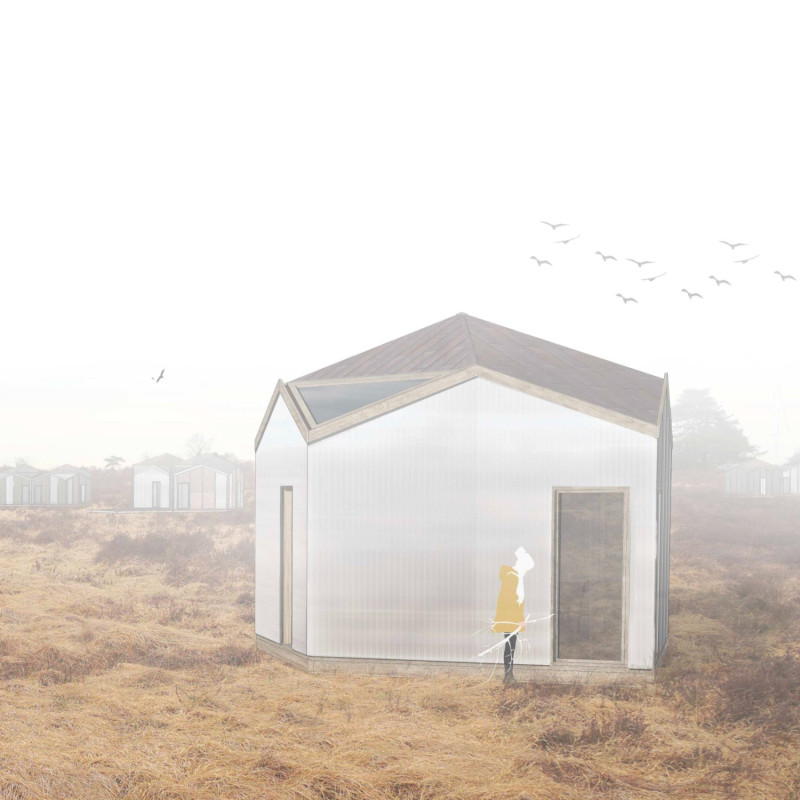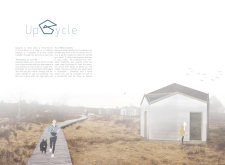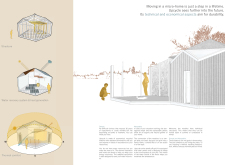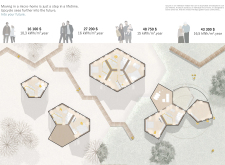5 key facts about this project
The core aspect of the design is its modular hexagonal formation, which optimizes spatial usage and facilitates future expansions. This adaptability allows residents to modify their homes in response to individual or family needs. The design also integrates a central core that houses essential utilities, allowing for a flowing internal space which enhances mobility and promotes communal living.
Emphasizing sustainability, the project uses locally sourced recycled materials, contributing to reduced environmental impact. Key materials include recycled panels, robust thermal insulation systems, and solar panels for energy generation. These elements not only provide durability but also significantly lower energy costs, aligning with modern standards of eco-conscious living.
Architectural Adaptation and Community Integration
A distinctive feature of "Upcycle" is its focus on community integration and adaptability. The architecture encourages connections among residents through shared pathways and communal spaces. This approach fosters interaction and social cohesion, creating a sense of belonging within a compact area.
The design incorporates advanced technologies such as a water recovery system for rainwater harvesting and efficient ventilation strategies that ensure thermal comfort. The layout promotes passive heating and cooling, allowing for a sustainable living environment that reduces reliance on external energy sources. These technical features reflect a commitment to enhancing the residents' quality of life without compromising on ecological principles.
Innovative Design Strategies for Modern Living
What sets "Upcycle" apart from conventional housing projects is its response to contemporary social and environmental concerns. By focusing on simplicity and flexibility, it exemplifies a shift towards smaller, more efficient living spaces that meet the needs of individuals and families in urban settings. Its modular nature allows for the addition of units, adapting seamlessly to evolving community dynamics over time.
The commitment to self-sufficiency is further supported by its innovative use of renewable technologies, encouraging occupants to live sustainably while maintaining comfort. The design's aesthetic blends seamlessly with the natural surroundings, reinforcing the connection between the structure and its environment.
For those looking to explore architectural plans, sections, and further design details of the "Upcycle" project, a comprehensive presentation is available. This provides an in-depth look at the architectural ideas and design outcomes that make this project a noteworthy addition to the conversation on sustainable living.


























